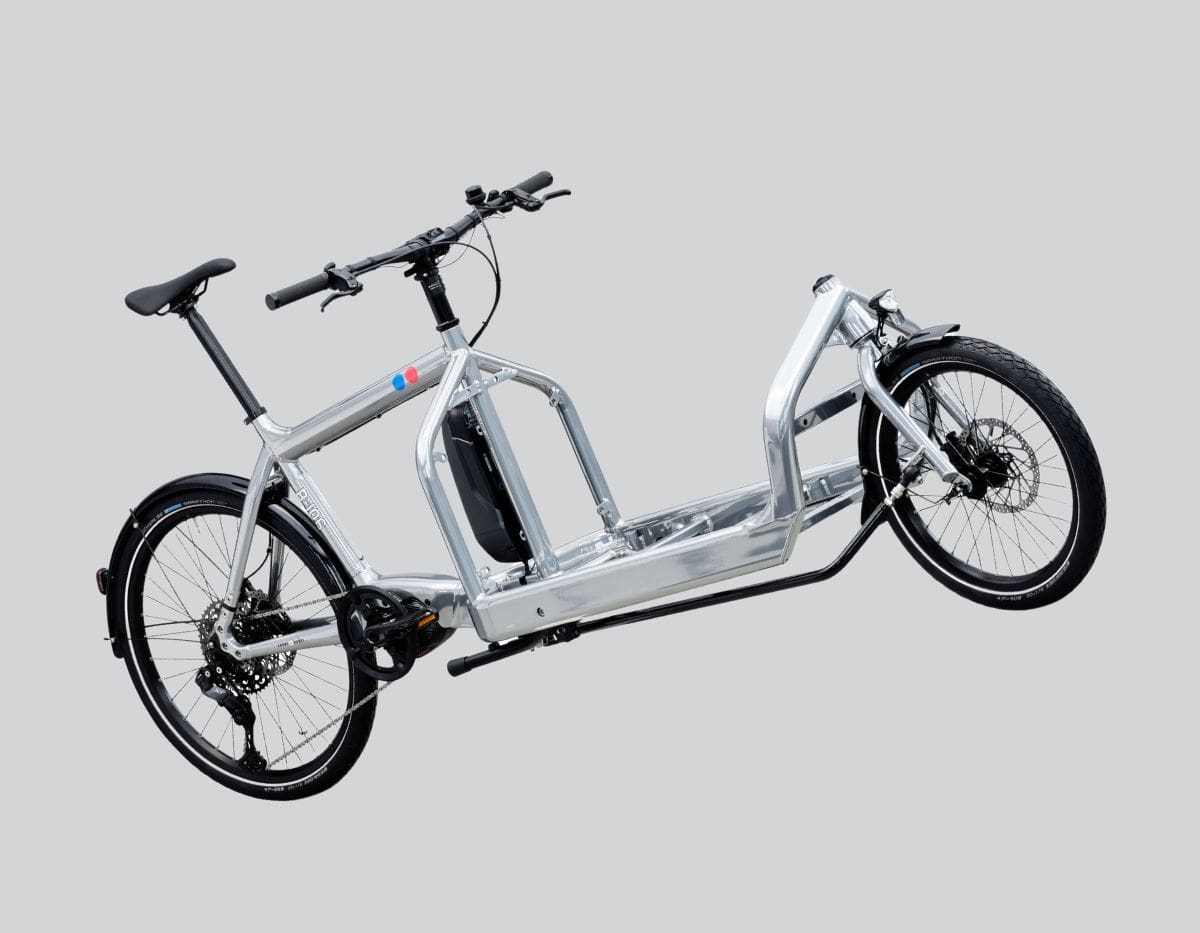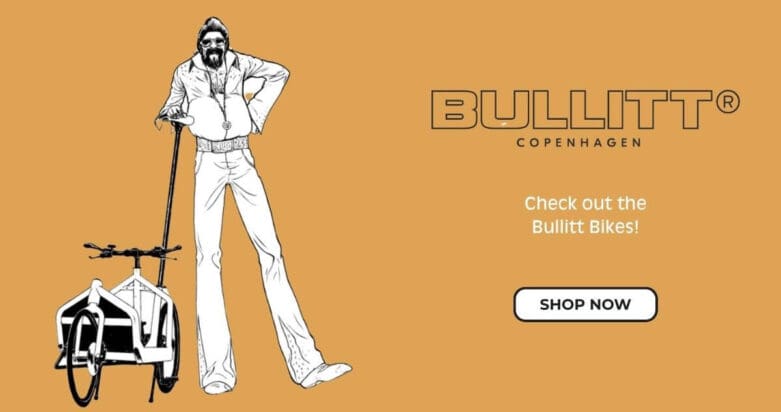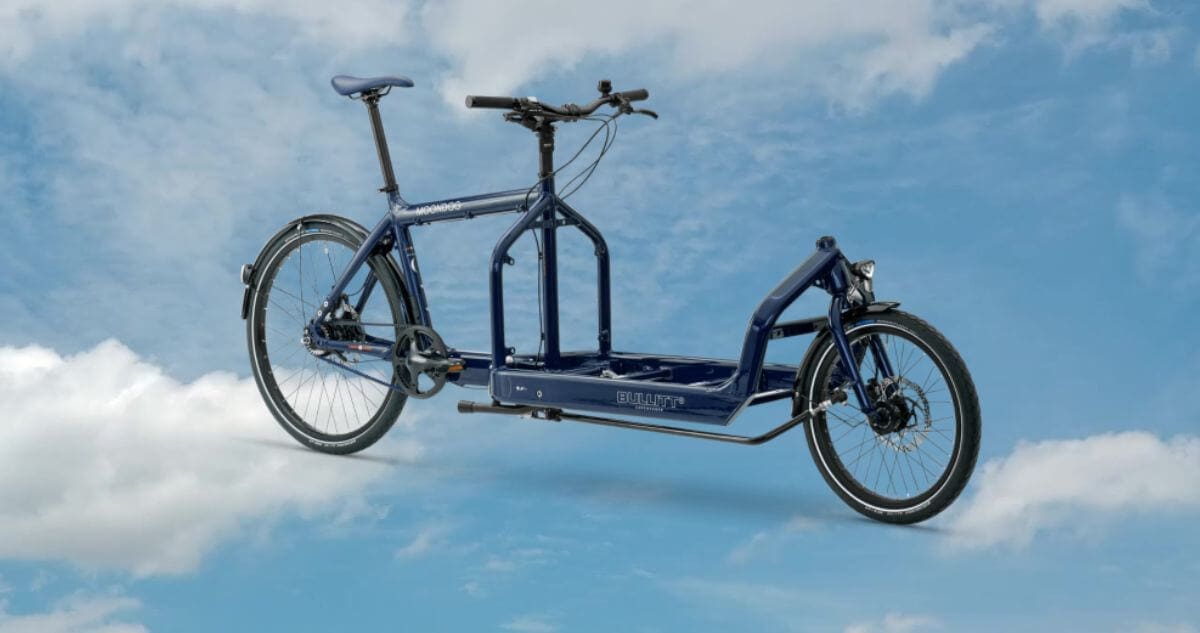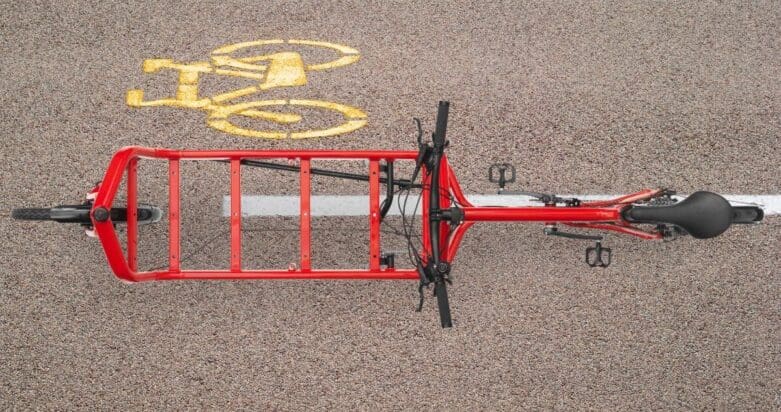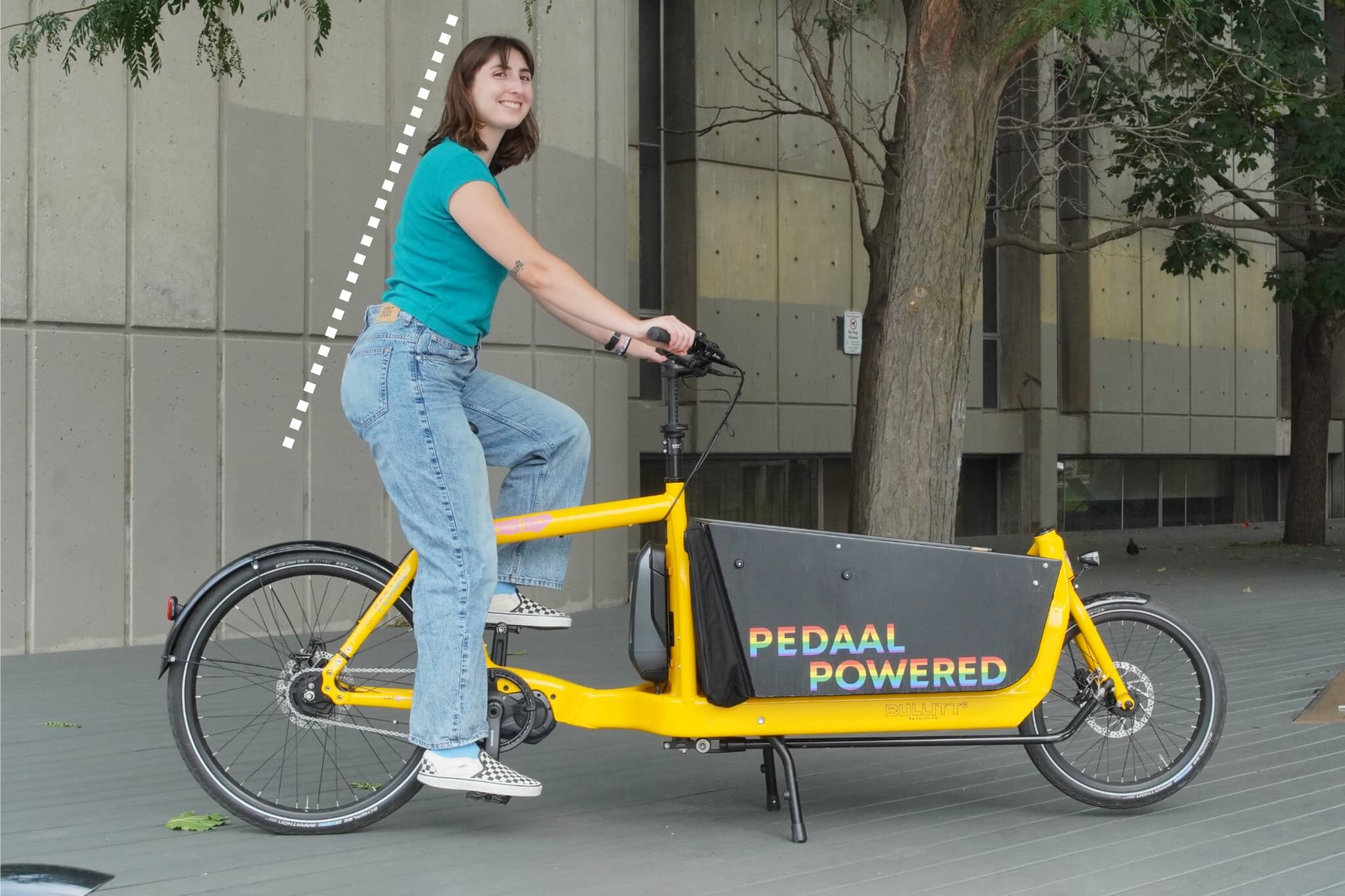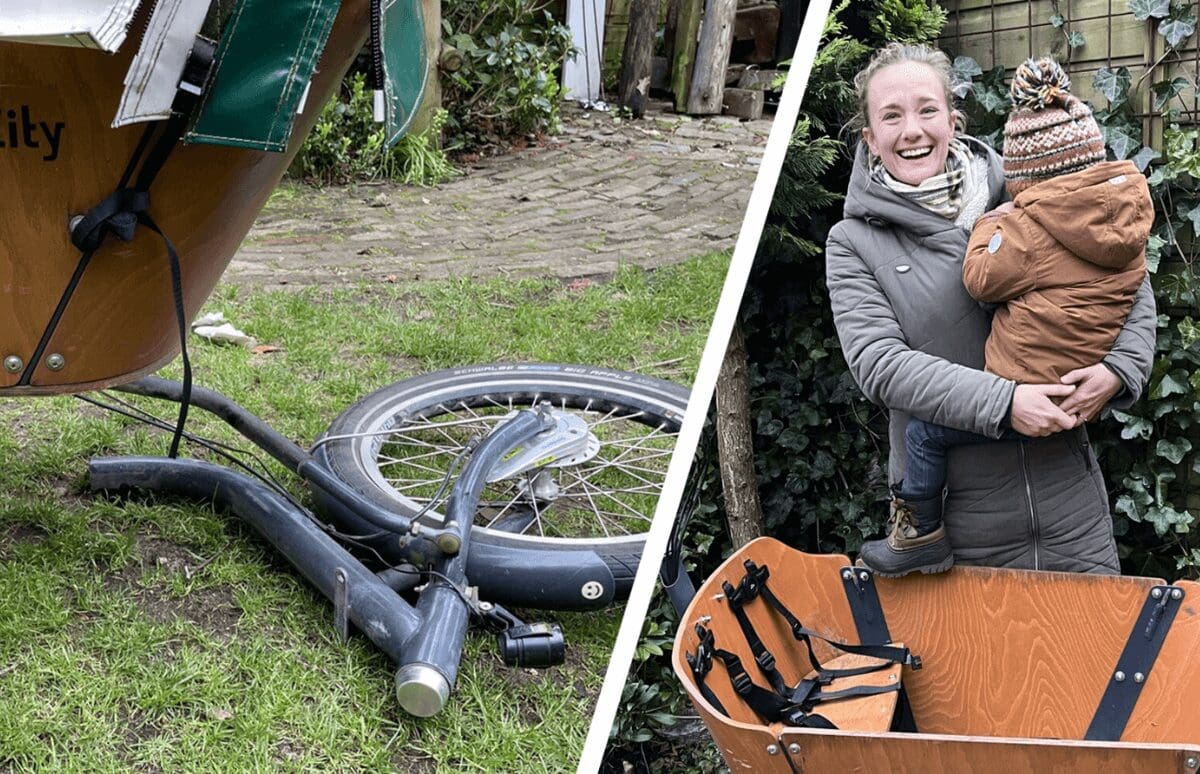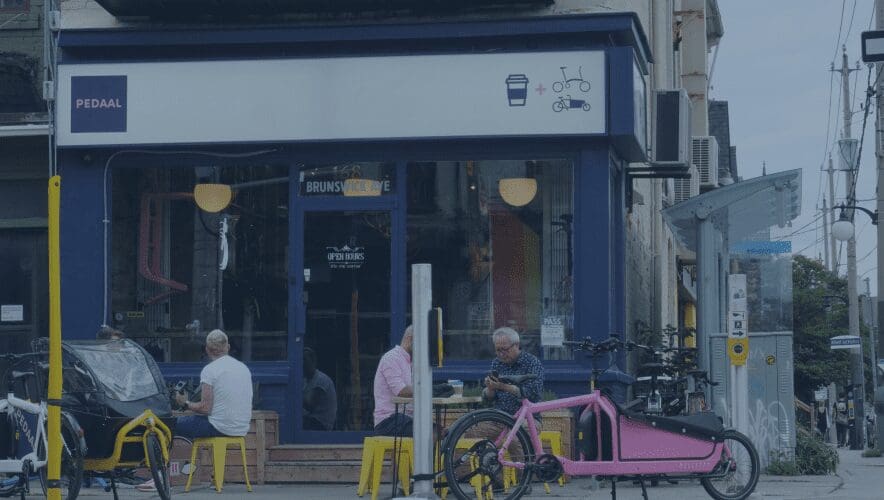Why is the Bullitt cargo bike the best choice on the market? To understand its superiority, we must look back to its Danish origins, which influence its design and address the shortcomings of many other cargo bikes. The Bullitt combines the modularity and handling of a longtail with the impact resistance of Dutch cargo bike. Best of all, a Bullitt bike offers a ride so enjoyable that it can serve as your main go-to bike, whether you’re riding it empty or full. And so, whether you have kids or whether you have groceries – whether you’re a small business or family – a Bullitt is a lifetime companion. Plus, like any ideal lifetime companion, it’s smart, adaptable, pretty good-looking, and your safest bet.
It’s the Lightest!
Why are cargo bikes often so heavy? It’s a legacy issue. The two-wheeled cargo bike, originally a Danish invention, was adapted by the Dutch, who tend to overbuild their bikes into heavy machines. Take the Gazelle Toer Populaire, a fairly standard non-cargo Dutch bike, which weighs 50lb. Compare this to the Bullitt which weighs in at just 45lb! In Denmark, this lighter weight makes Bullitt a favourite not just for cargo use but even for daily use without cargo.
But the real difference shows in Dutch cargo bikes like the Babboe City and VanAndel bakfiets, which weigh around 130lb each without motors. These bikes are so heavy that Babboe had to recall all units globally due to structural failures. Even Dutch options like the Urban Arrow, which uses lighter materials, still tip the scales at 110lb, making them cumbersome to handle.
Bullitt bikes, however, break this trend. Weighing around 45lb for non-electric models and 55lb for electric ones, they’re easy to lift over curbs or push up ramps. Bullitt’s strength comes from its origins in bike messenger services, making it commercial-grade and a global benchmark for durability. Unlike others, Bullitt frames are a single, solid unit—no bolts to snap under pressure. This superior design ensures a stronger, lighter, and more reliable ride than any competitor. More fun too!
It’s the Narrowest
The average bike lane in North America ranges from 1.2 to 1.8 meters wide. With an Urban Arrow cargo bike measuring 70 cm across, it occupies over half of this space, potentially blocking bicycle traffic behind it with no room to pass. Now, consider that the European Cyclists Federation estimates that bikes can be up to 50% faster than cars in traffic. Why? Because a bike takes up less space. This spatial efficiency is why companies like FedEx are investing in cargo bikes, avoiding the gridlock that traps delivery trucks.
But, FedEx chooses Bullitt bikes and they do so for a reason: a Bullitt is just 46 cm wide. Bullitt engineered this precise width after researching global bike lanes to optimize a cargo bikes ability to pass and be passed. In other words, the wider the cargo bike, the closer it comes to inheriting the same problems as a car. And, these are the problems that a cargo bike is designed to solve. No one has solved this problem better than Bullitt.
Multi-position
As cargo bikes transitioned from Denmark to Holland, they not only became heavier but they adopted a default riding position that not everyone loves. The Dutch humorously refer to this as the “sit up and beg” position, and nearly all of their bikes feature it. This position keeps your back completely straight, squares the shoulders, and there is no reach; the arms just drop to the handlebar. While this position offers great comfort, it is terribly inefficient for longer distances, hills, or efficient cornering. A prime example is Urban Arrow cargo bikes. Unlike an Urban Arrow, with a Bullitt you can have it all ways.
Now, it does need to be said that bio-mechanically speaking, the more a rider leans forward over the pedals, the greater the power transfer to the pedals. Similarly, putting weight on the handlebars increases cornering performance. Generally speaking, the more the rider is pivoted forwards the more efficient the riders is. But, the cost is comfort. It’s a question of preference or finding the sweet spot. For instance, there are many who are happy to sacrifice all of their comfort for efficiency. A good example of this is a bicycle messenger for whom time is money. But, somewhere between the bike messenger and the Dutch sit-up-and-beg position there can be found other positions. Bullitt bikes stand out as the only cargo bike that lets riders dial in their own preference. Prefer the Urban Arrow’s posture? No problem! Want a racing bike stance? Easy! Need something in between? Bullitt can accommodate all preferences.
Modular
The Bullitt cargo bike stands out for its lifetime of modular versatility. Unlike traditional cargo bikes designed only for kids, the Bullitt adapts to every stage of life—before, during, and after parenthood. Its flatbed accommodates strapped-down items, rubbermaid bins, or a variety of plug-and-play options. This, combined with its exceptional lightweight design, makes the Bullitt the ideal everyday cargo bike and everyday city bike.
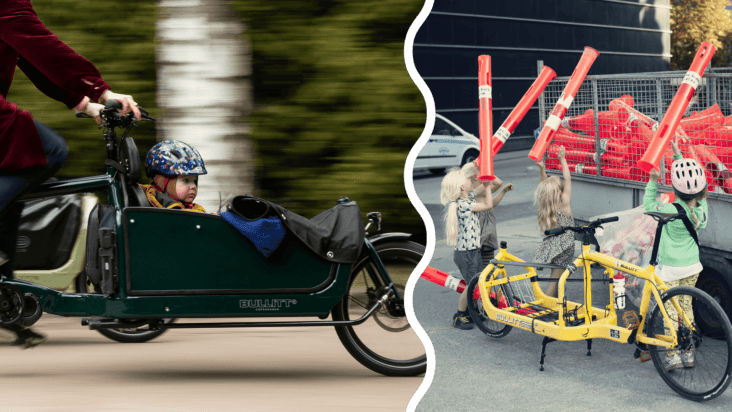
This distinction highlights a cultural difference between the Dutch and the Danish. In the Netherlands, bike ownership averages 1.4 per person, akin to North Americans owning multiple cars. It could be argued that the Dutch design cargo bikes much like North American engineers design minivans: heavy and intended only to be used while kids are in the picture. In contrast, the Danes only own on average one bike per person. This puts a different set of burdens on the engineer designing cargo bikes. Instead of assuming this bike is solely for kids and will be sold once the kids are grown up, the burden here is to design a bike that provides a high degree of modularity for all stages of adult life. In this way a Bullitt is much like a longtail, only it is significantly safer.
Safe
If you’re buying a bike to transport kids then the guiding adjective must be the word “safety.” Safety has everything to do with the impact-resistant box found on European front-loading cargo bikes like Bullitt. These bikes undergo a battery of tests that simulate a car impact. These tests aim to ensure that if the bike was hit at certain speeds, the precious cargo would still be safe. Because front-loader bikes like Bullitt originate from Europe, there is far more regulation around children’s safety. Not so in North America. Despite the higher degree of cars competing for space in North America, a parent can use a trailer, a child seat, or a long-tail bike without any regulations. The North American answer has been a bike called the longtail. Bike stores tend to sell longtails because they ride a lot like a regular bike. But, compared to a front-loading cargo bike, longtails aren’t safe.
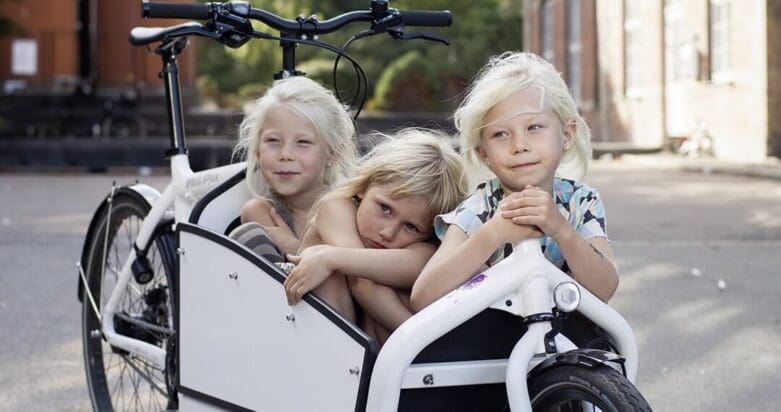
Safety always begins with an impact resistant box. All the same, good handling is an important aspect of safety. And handling always improves the lighter the bike gets. This is why companies like Bullitt continue to raise their eyebrows at longtails and Dutch bikes like the Urban Arrow. After all, you shouldn’t have to choose impact resistance over reactive handling. Both are critical. The reality is that Danish cargo bikes have always combined these two long before the Dutch cargo bike began to control the narrative. At the end of the day, the longtail is a poor reaction to the Dutch designs and the Dutch design remains a poor reaction to a Bullitt’s design.
In Conclusion
Bullitt offers a ton of modular plug-and-play boxes that ensure your child’s safety, a multi-position seating position that’s easy to adjust, and a modular bike that is there for every step in your life, whether you have a family or not. Have any questions? Please book a remote or in-store cargo bike appointment here! Or, shoot us an email anytime at info@pedaal.com

